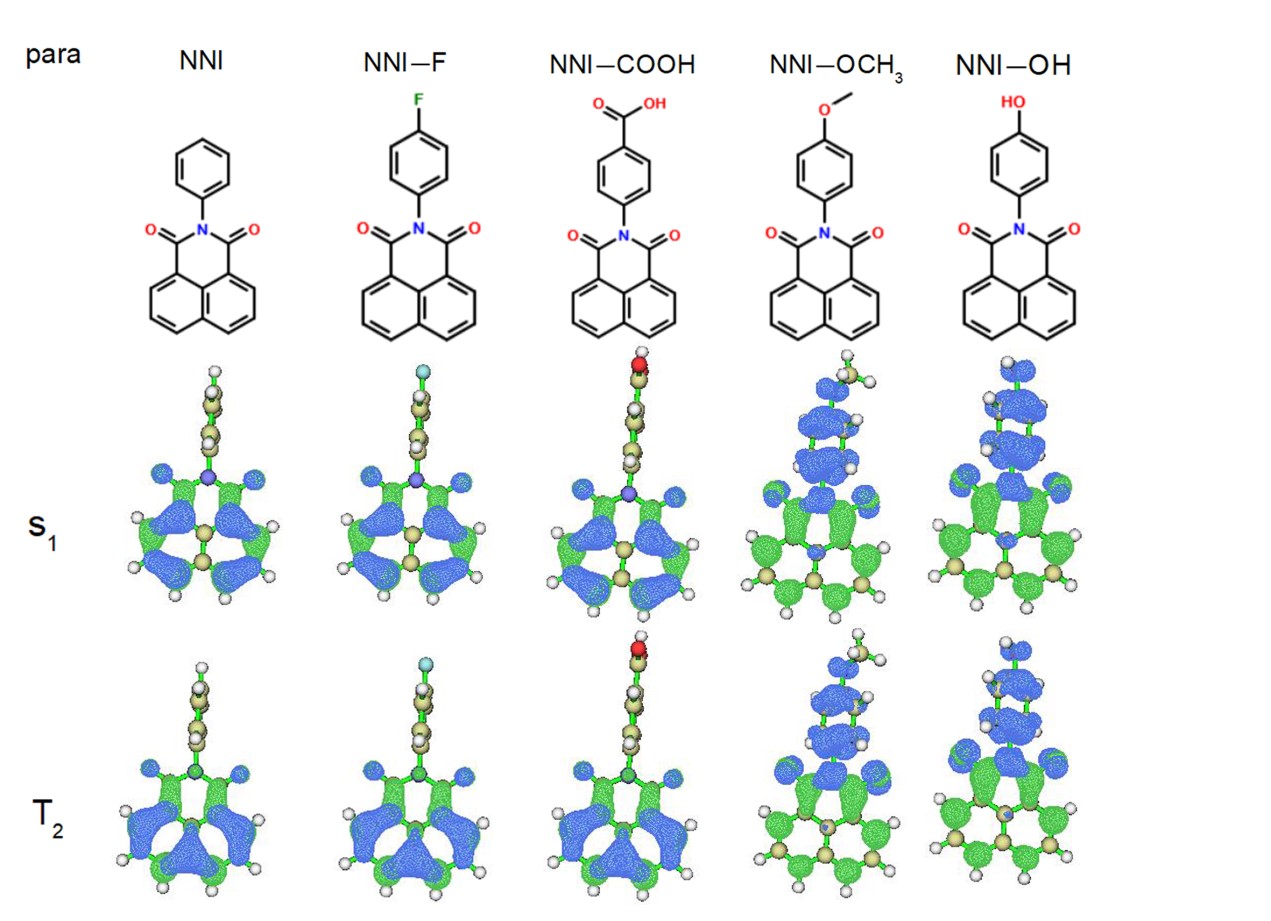Chemical induction of a CT state can restrain fluorescence, promoting ISC.
In brief:
- N-substituted naphthalimides (NNI) were investigated with para and meta addition of electron donating (EDG) and electron withdrawing (EWG) groups.
- While NNI-EWG is fluorescent, NNI-EDG crosses to the triplet states.
- The reason for ISC in NNI-EDG is the restrained fluorescence caused by a low-lying CT state.
- Restrained fluorescence can activate ISC even in El-Sayed-forbidden transitions.
Pure light-atoms organic phosphorescent molecules have been under scientific scrutiny due to their flexibility, low environmental impact, and low cost. The development of such materials, however, faces diverse challenges, including their intrinsically small spin-orbit couplings (SOC), a problem that can be addressed by seeking a proper chemical functionalization to promote intersystem crossing (ISC) in a formerly fluorescence system.
For instance, Chen et al. have experimentally shown that phosphorescence can be activated in N-substituted naphthalimides (NNI) by some chemical substitutions.
In a project led by Guozhen Zhang, we have investigated this phenomenon using a computational approach, to unveil how it works.
We have calculated the fluorescence and ISC rates for NNI and NNI functionalized with electron donating (EDG) and electron withdrawing (EWG) groups in the para and meta positions. The EDGs were –OH and –OCH3, while the EWGs were –F and –COOH. The computed rates are shown in the Table below.
| kISC (107 s-1) | kFL (107 s-1) | |
| NNI | 4.3 | 18.9 |
| Para | ||
| -F | 4.1 | 18.9 |
| -COOH | 3.9 | 20.0 |
| -OCH3 | 12.2 | 0.50 |
| -OH | 8.8 | 0.60 |
| Meta | ||
| -F | 3.9 | 18.9 |
| -COOH | 3.9 | 19.0 |
| -OCH3 | 31.0 | 0.30 |
| -OH | 27.7 | 0.20 |
For NNI and NNI-EWGs, the fluorescence rate is bigger than the ISC rate, indicating that these molecules are fluorescent. Nevertheless, for the NNI-EDGs, the fluorescence rate is much smaller than the ISC rate, indicating that the ISC dominates.
The reason for this difference between the two groups of molecules is in the character of the lowest singlet state. While for NNI and NNI-EWGs it is a localized state, for NNI-EDGs it is a CT state. The small oscillator strength with the ground state in the latter case restrains the fluorescence, making ISC more likely.
It is particularly interesting that the spin-orbit couplings for all species are always about or smaller than 2 cm-1. Such tiny value is comparable to those found in an El-Sayed forbidden transition in a pure light-atom organic molecule. This means that restrained fluorescence can efficiently promote ISC even under such an unfavorable situation.
These results are presented in Ref. [1].
MB
Reference
[1] R. Liu, X. Gao, M. Barbatti, J. Jiang, G. Zhang, Promoting Intersystem Crossing of Fluorescent Molecule via Functional Group Modification, J. Phys. Chem. Letters, DOI: 10.1021/acs.jpclett.9b00286 (2019).

